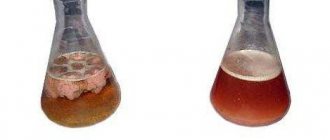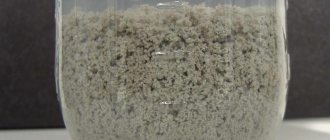Last updated January 25, 2021 at 03:59 pm
Reading time: 5 min
Bacteria are present everywhere, their numbers are huge, the types are different. Anaerobic bacteria are the same types of microorganisms. They can develop and live independently, whether there is oxygen in their feeding environment or whether it does not exist at all.
Anaerobic bacteria obtain energy through substrate phosphorylation. There are facultative, obligate, and other varieties of anaerobic bacteria.
List of infections caused by anaerobic bacteria
Facultative species of bacteria are found almost everywhere. The reason they exist is a change from one metabolic pathway to a completely different one. This type includes Escherichia coli, staphylococci, shigella, and others. These are dangerous anaerobic bacteria.
If there is no free oxygen, then obligate bacteria die.
Arranged by class:
- Clostridia are obligate types of aerobic bacteria that can form spores. These are the causative agents of botulism or tetanus.
- Non-clostridial anaerobic bacteria . Varieties of microflora of living organisms. They play a significant role in the formation of various purulent and inflammatory diseases. Non-spore-forming types of bacteria live in the oral cavity and gastrointestinal tract. On the skin and in the genitals of women.
- Capneic anaerobes . They live with an exaggerated accumulation of carbon dioxide.
- Aerotolerant bacteria . In the presence of molecular oxygen, this type of microorganisms does not breathe. But he doesn’t die either.
- Moderately strict types of anaerobes . In an environment with oxygen they do not die or reproduce. Bacteria of this species require a food environment with reduced pressure to live.
Useful or harmful
The genus Bacteroides is an example of anaerobic bacteria that are both beneficial and harmful. In the gastrointestinal tract, species of this genus aid digestion, but when found in other areas of the body, they can cause sinus thrombosis, pneumonia, and meningitis, among other diseases. Other anaerobes help people without living in their bodies. For example, some Lactobacillus species are commonly used in cheese production. Additionally, some Clostridium species can be used in bioremediation, which is the process of reusing contaminated soil; they do this by attacking pollution and converting it into non-toxic carbon dioxide.
Anaerobes - bacteroids
Considered to be more important aerobic bacteria. They make up 50% of all inflammatory and purulent types. Their causative agents are anaerobic bacteria or bacteroides. These are gram-negative obligate types of bacteria.
Rods with bipolar staining and sizes from 0.5 to 1.5, over areas of approximately 15 μm. They can produce enzymes, toxins, and cause virulence. Depends on antibiotic resistance. They may be resistant, or simply sensitive. All anaerobic microorganisms are very resistant.
Energy production for gram-negative obligate anaerobes occurs in human tissues. Some of the tissues of organisms have increased resistance to reduced levels of oxygen in the nutritional environment.
Under standard conditions, adenosine triphosphate synthesis is performed only aerobically. This occurs with increased physical effort, inflammation, where anaerobes act.
ATP is an adenosine triphosphate or acid that appears during energy production in the body. There are several variations in the synthesis of this substance. One of them is aerobic, or makes up three variations of anaerobes.
Anaerobic mechanisms for the synthesis of adenosine triphosphate:
- rephosphorylation, which occurs between adenosine triphosphate and creatine phosphate;
- formation of transphosphorylation of adenosine triphosphate molecules;
- anaerobic breakdown of blood components glucose and glycogen.
Risks of Aerobic Exercise
Aerobic exercise is beneficial for most people. However, it is necessary to talk to a doctor before practicing aerobic exercise if a person has cardiovascular disease, such as:
- heart disease
- coronary heart disease
- high blood pressure
- thrombosis
- exposure to the risk of developing cardiovascular diseases
- recovery from a stroke or other cardiac event
Doctors may make specific exercise recommendations or suggest reasonable restrictions to make aerobic exercise easier.
A person with a sedentary lifestyle should gradually move on to physical activity. The sudden introduction of long-term, high-intensity aerobic exercise can place unnecessary stress on the body.
Formation of anaerobes
The purpose of microbiologists is the cultivation of anaerobic bacteria. To accomplish this, specialized microflora and concentration of metabolites are required. It is usually used in studies of various types.
For example, when detecting parasites that live in every person. Parasites can cause different types of diseases.
There are special methods for cultivating anaerobes. Occurs when air is replaced with gas mixtures. The action takes place in sealed thermostats. This is how anaerobes grow. Another method is the cultivation of microorganisms with the addition of reducing agents.
Aerobic exercise
Aerobic exercise
is an endurance exercise in which a person's muscles move rhythmically and in a coordinated manner over a long period of time. These exercises are called aerobic because they require oxygen to produce energy. Aerobic exercise increases a person's heart rate and breathing rate to provide more oxygen to the muscles.
Examples of aerobic exercise include:
- fast walk
- run
- a ride on the bicycle
- swimming
Food sector
There is a field of nutrition with a general view or a differential diagnostic one. The basic one for the Wilson-Blair species is agar-agar, which contains some glucose, ferric chloride, and sodium sulfite among its constituents. Among them there are colonies that are called black.
The Ressel sphere is used to study the biochemical qualities of bacteria called salmonella or shigella. This medium may contain both glucose and agar-agar.
Ploskirev’s medium is such that it can inhibit the growth of some microorganisms. They make up a multitude. For this reason, it is used for differential diagnostic purposes. Dysenteric pathogens, typhoid fever, and other pathogenic anaerobes can be successfully produced here.
The main direction of the bismuth sulfite agar medium is that this method is intended for the isolation of Salmonella. This is accomplished by the ability of salmonella to produce hydrogen sulfide.
In the body of every living individual, many anaerobes live. They cause various types of infectious diseases in them. Infection can only occur when the immune system is weakened or the microflora is disrupted. There is a possibility of infections entering a living organism from its environment. This could be in the fall, during the winter. This incidence of infections persists throughout the listed periods. The disease caused sometimes causes complications.
Infections caused by microorganisms - anaerobic bacteria - are directly related to the flora of the mucous membranes of living individuals. With the residence of anaerobes. Each infection has several pathogens. Their number usually reaches ten. The absolutely specified number of diseases that cause anaerobe cannot be determined with accuracy.
Due to the difficult selection of materials intended for studying the transport of samples, the determination of bacteria. Therefore, this type of component is often detected only in cases of already chronic inflammation in humans. This is an example of inattention to one's health.
Absolutely all people of different ages are periodically exposed to anaerobic infections. In young children, the degree of infectious inflammation is much greater than in people of other ages. Anaerobes often cause diseases inside the skull in humans. Abscesses, meningitis, other types of diseases. The spread of anaerobes is carried out through the bloodstream.
If a person has a chronic disease, then anaerobes can form abnormalities in the neck or head. For example: abscesses, otitis media or lymphadenitis. Bacteria are dangerous for the gastrointestinal tract and lungs of patients.
If a woman has diseases of the genitourinary system, then there is a risk of anaerobic infections. Various diseases of the skin and joints are also a consequence of the life of anaerobes. This method is one of the first to indicate the presence of infection.
How often should you do aerobic exercise?
Adults can do either 150-300 minutes of moderate aerobic activity or 75-150 minutes of vigorous aerobic activity each week. Increasing your exercise will provide greater health benefits.
Moderate aerobic activity includes activities such as brisk walking and cycling. The rule of thumb is that the person should be comfortable talking while performing these activities. More vigorous aerobic exercises include long-distance running and intense cycling. Vigorous aerobic activity allows you to reach your weekly aerobic activity needs faster.
Causes of infectious diseases
Human infections are caused by processes in which energetic anaerobic bacteria enter the body. The development of the disease may be accompanied by unstable blood supply and the appearance of tissue necrosis. This can include injuries of various types, swelling, tumors, and vascular disorders. The appearance of infections in the oral cavity, diseases in the lungs, pelvic inflammation, and other diseases.
The infection can develop differently for each species. The development is influenced by the type of infectious agent and the health of the patient. Diagnosing such infections is difficult. The seriousness of diagnosticians is often based only on assumptions. There is a difference in the characteristics of infections that arise from non-clostridial anaerobes.
The first signs of infection are gas formation, some kind of suppuration, and the appearance of thrombophlebitis. Sometimes the signs may be tumors or neoplasms. They can be neoplasms of the gastrointestinal tract, uterine. Accompanied by the formation of anaerobes. At this time, an unpleasant odor may emanate from the person. But, even if there is no smell, this does not mean that anaerobes, as pathogens for infection, are not present in this organism.
Benefits of Aerobic Exercise
Aerobic exercise increases your heart rate, breathing rate, and blood circulation. Thus, they improve the health of the human cardiovascular system.
Some potential benefits of aerobic exercise include:
- increasing endurance and reducing fatigue
- weight management help
- decreased blood pressure
- increasing the level of “good” cholesterol and decreasing the level of “bad” cholesterol in the blood
- stimulating the immune system
- improved mood
- improved sleep
- slowing bone loss
A 2015 study examined whether regular aerobic activity reduced a person's risk of mortality. The study found that people who did a total of 1-2 hours of light jogging over the course of a week had a lower risk of mortality than those who did not exercise. However, people who did intense jogging had the same risk of mortality as those who did not exercise at all. This finding suggests that moderate aerobic exercise may reduce the risk of mortality, but high-intensity aerobic exercise does not provide any additional benefit.
How do bacteria breathe? Biology (6th grade) school microbiology course
At school we were given only the simplest knowledge of how the respiration process of prokaryotes occurs. These microorganisms do not have mitochondria, however, they have mesosomes - protrusions of the cytoplasmic membrane into the cell. But these structures do not play the most key role in bacterial respiration.
Since fermentation is a type of glycolysis, it occurs in the cytoplasm of prokaryotes. There are also numerous enzymes necessary for carrying out the entire chain of reactions. In all bacteria, without exception, two molecules of pyruvic acid are first formed, just like in humans. And only then they turn into other by-products, which depend on the type of fermentation.










